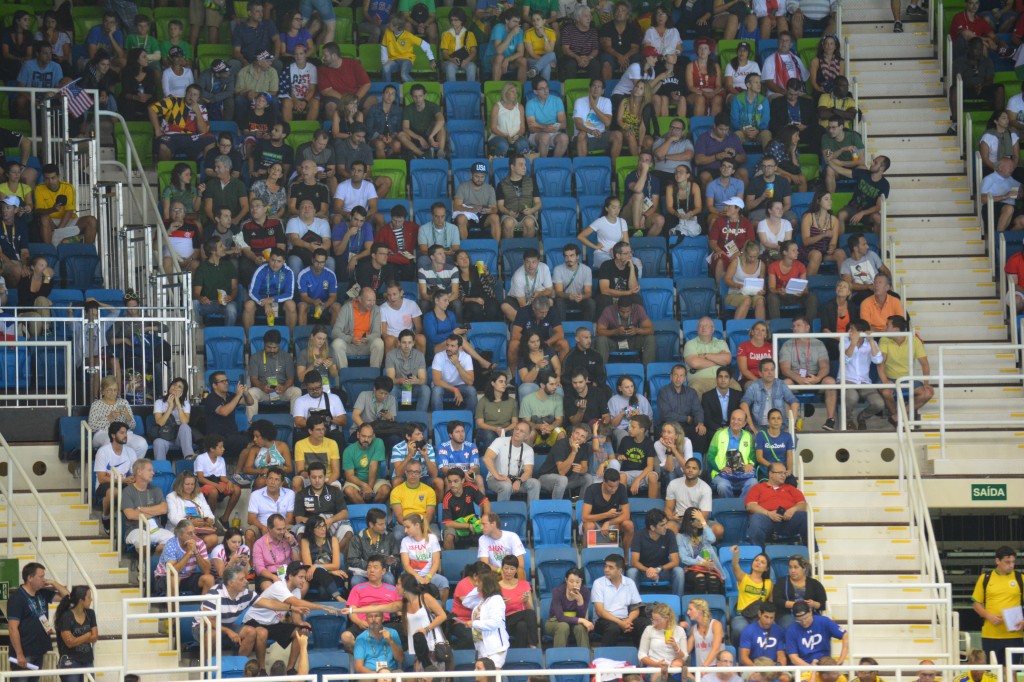After several days of events, one trend that is hard to ignore at the Olympic Summer Games is the number of empty seats. This issue has come up in years past, including in London, with regard to the lower-bowl seats most in view of television cameras—those reserved for Olympic “family” members and sponsors that sometimes just go unused. Those seats are still occasionally empty here.
What’s obvious, though, are the empty seats higher up as well, the ones for everyday fans. That has surely been the case in some of the outlining zones, where events like rugby sevens and field hockey in the Deodoro section of Rio de Janeiro have been playing to plenty of empty seats.
But it has also held true for so-called high-demand events, where there appear to be empty pockets of seats even for the nightly swimming finals, the team gymnastics competitions and games for the U.S. men’s basketball team. Rio 2016 organizers said this week that 80 percent of Games tickets have been sold (after making promises they would sell 100 percent) and that feels about right at the high-profile events. At the lower-profile events, though, the percentage feels considerably lower than that.
Brazilians are typically late arrivals at live events, and that may have an impact on the beginning portion of events (which was the case the other day when the stands were virtually empty to start a beach volleyball session only to fill in as the day went on). But it is safe to say there are more empty seats than organizers would have preferred.


















 Copyright © 2025 by Northstar Travel Media LLC. All Rights Reserved. 301 Route 17 N, Suite 1150, Rutherford, NJ 07070 USA | Telephone: (201) 902-2000
Copyright © 2025 by Northstar Travel Media LLC. All Rights Reserved. 301 Route 17 N, Suite 1150, Rutherford, NJ 07070 USA | Telephone: (201) 902-2000